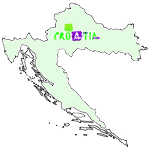 |
|
Carbon footprint reduction for industry and public sectorCarbon footprint reduction is not just about saving the planet; it is also about saving your money!Our team will prepare for you: - Carbon footprint analysis - Strategic plan for carbon footprint reduction - Implementation workshops - Software solution for carbon footprint monitoring in a real time - Design of specific solutions according to your needs And we are happy to help you with that. Purchase your Carbon Footprint Certificate. Case study: Ways of acting towards mobilisation and development of local community |
|


|
|
| Regional development, sustainable rural development, food safety, CBA | |